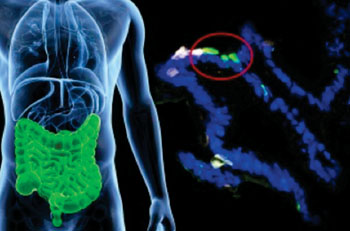Deletion of the FOXO1 Gene Transforms Intestinal Cells into Insulin Producers
By LabMedica International staff writers
Posted on 14 Jul 2014
After having demonstrated that gut endocrine progenitor cells of mice could be differentiated into glucose-responsive, insulin-producing cells by elimination of the transcription factor FOXO1 (forkhead box O1), diabetes researchers have extended these findings by obtaining similar results with human gut endocrine progenitor and serotonin-producing cells.Posted on 14 Jul 2014
Generation of alternative sources of insulin-producing beta-cells has been a goal of researchers in the field of diabetes therapy. While most efforts have been directed at differentiating embryonic or induced pluripotent stem (iPS) cells into beta-like-cells, investigators at Columbia University (New York, NY, USA) have shown that shown that mouse intestinal cells could be transformed into insulin-producing cells by deactivating the cells’ FOXO1 gene.

Image: Human gastrointestinal cells from patients were engineered to express insulin (fluorescent green) in the laboratory (Photo courtesy of Columbia University).
In a paper published in the June 30, 2014, online edition of the journal Nature Communications, the investigators revealed that FOXO1 was present in human gut endocrine progenitor and serotonin-producing cells. Using gut organoids derived from human iPS cells, they demonstrated that inhibition of FOXO1 using a dominant-negative mutant or Lentivirus-encoded small hairpin RNA promoted generation of insulin-positive cells that expressed all markers of mature pancreatic beta-cells and survived in vivo following transplantation into mice.
“People have been talking about turning one cell into another for a long time, but until now we had not gotten to the point of creating a fully functional insulin-producing cell by the manipulation of a single target,” said senior author Dr. Domenico Accili, professor of diabetes at Columbia University. “By showing that human cells can respond in the same way as mouse cells, we have cleared a main hurdle and can now move forward to try to make this treatment a reality.”
Related Links:
Columbia University








 (3) (1).png)




